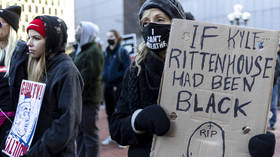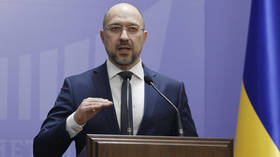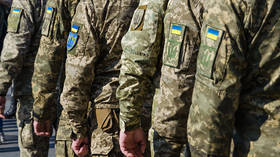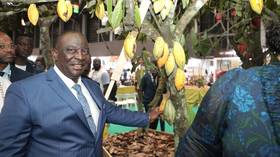Man avoids jail time over buying Kyle Rittenhouse a rifle

The man who bought Rittenhouse his AR-15-type rifle when the Illinois resident was too young to make the purchase himself has pleaded no contest to a non-criminal charge, allowing him to avoid multiple felony convictions.
Kenosha County Circuit Judge Bruce Schroeder accepted the no-contest plea of Dominick Black on a single charge of contributing to the delinquency of a minor following a six-minute hearing on Monday. Black, initially charged in November with two counts of delivering a dangerous weapon to a minor resulting in death, opted to plead no contest to the non-criminal citation regarding his purchase of a Smith & Wesson rifle for his underage friend from a Wisconsin hardware store in May 2020.
The plea deal was filed on Friday by Assistant District Attorney Thomas Binger and requires Black to pay a $2,000 fine.
Black was 18 when he bought Rittenhouse the rifle the then-17-year-old used to defend himself and a Kenosha car dealership during the riots that gripped the Wisconsin city in August 2020 following the police shooting of Jacob Blake. Rittenhouse was found not guilty by reason of self defense of all five charges filed against him after fatally shooting two men and wounding a third during the riots, which continued for several nights after Blake was shot in the back while attempting to flee police during a domestic violence arrest.
During Rittenhouse’s trial, Black testified that he had purchased the rifle so the pair could hunt and target-shoot on a friend’s property. The two became friends through Rittenhouse’s sister, whom Black was dating at the time. As he told the court during Rittenhouse’s trial, Black quickly came to see the younger boy as a brother, seeing him “nearly every day.”
While Black and Rittenhouse knew it was illegal for the 17-year-old to own the rifle, they agreed Rittenhouse wouldn’t take possession of the gun himself until his 18th birthday, and aside from going out shooting once together, Black testified, Rittenhouse had not used the rifle until the night of the riots.
Hours after visiting Kenosha and seeing the damage from the riots, the two teens returned to the city when Black’s friend suggested they help protect a car dealership where the friend had previously worked. They brought their rifles, Black testified, in the hope of deterring looters and rioters from targeting the dealership, and were separated over the course of the night’s events.













